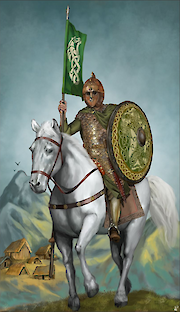☜ Click for full post text.
Welcome, dear readers, as ever.
Juliet, standing on her balcony, is talking to herself, unaware that Romeo is standing right below:
“Iul: Ah Romeo, Romeo, wherefore art thou Romeo?
Denie thy Father, and refuse thy name,
Or if thou wilt not be but sworne my loue,
And il’e no longer be a Capulet.
Rom: Shall I heare more, or shall I speake to this?
Iul: Tis but thy name that is mine enemie.
Whats Mountague? It is nor hand nor foote,
Nor arme, nor face, nor any other part.
Whats in a name? That which we call a Rose,
By any other name would smell as sweet: “ (Shakespeare, Romeo and Juliet, 827 – 838 — no act or scene numbers and this is modern lineation of the 1597 (Quarto 1) version — in the Folger Edition, this is Act 2, Scene 2, lines 36 – 47 — for the 1597 version, see: https://internetshakespeare.uvic.ca/doc/Rom_Q1/index.html ; for the Folger Edition: https://shakespeare.folger.edu/wp-content/uploads/2020/04/Rom.pdf )

Thinking of a few items from certain other genres of western literature, however, I’m not sure that I agree with Juliet.
We can start early, with heroic poetry and the Odyssey. When Odysseus, in need of help finally to reach home, drags himself ashore on the island of Scheria, home of the Phaeacians, he first encounters a princess, Nausicaa.

The Phaeacians are, appropriately for islanders, a sea-going people, and the princess’ name may be translated as either “Excelling-in-ships” or, more alarmingly perhaps, “Ship-burner”. (There is some scholarly argument about this — see this interesting discussion: https://sententiaeantiquae.com/2020/12/08/was-nausikaa-a-ship-burner-speaking-names-and-etymology‑2/ ) Other Phaeacians have similar maritime names, like the herald, Pontonoos — “Sea-minded” — and the founder of the Phaeacian nation himself, Nausithoos — “Swift-ship”.
Many years later, we’ll see Tolkien echo this with the names of some of his horse-people, the Rohirrim,

(by JlazarusEB — more at his website: https://www.deviantart.com/jlazaruseb He’s very cleverly taken a hint from JRRT’s use of Old English as the basis of Rohirric to employ the 7th-century AD Sutton Hoo helmet as a model. ) with
with such names as Eomer — “Famous-for-[his]-horses”—

(by that very interesting Russian illustrator, Denis Gordeev)
and his sister, Eowyn — “Horse-friend”.
(another work by Gordeev)

From the heroic, we can easily move to morality, or perhaps I should say mortality, with the late 15th century play, “The Summoning of Everyman”,

(from the earliest printing)
where the very name of the main character points a finger towards the entire audience. The plot of this drama has Everyman going on a kind of life journey towards death and judgment in which he tries to recruit others to join him. These others are very easy to recognize even before they speak by names like “Good Deeds”, “Wisdom”, and “Strength”. (If you’re not familiar with this work, here’s the LINK to an early 20th-century translation into modern English: https://archive.org/details/summoningofevery00leip/page/n5/mode/2up )
We might almost call this “labeling” rather than “naming” and such labeling is a common feature of the English morality/mortality tradition, from the 14th-century on, perhaps the most famous later version being John Bunyan’s (1628−1688)

The Pilgrim’s Progress (1678).

Like Everyman, this is a journey,

in which the main character, on his way to what he hopes is salvation, encounters all sorts of figures with give-away names, like “Mr. Worldly Wiseman”

and “Faithful”.

(who is burned at the stake, thus providing later illustrators with a dramatic scene)
We can see Charles Dickens (1812−1870)

continue this practice in the 19th century in another genre, novels. Among descriptive names in his various books, we find “Wackford Squeers”, a brutal headmaster,

“Mr. Gradgrind”, an educational reformer

and “Mr. M’Choakumchild” , another teacher (giving you a good idea of what Dickens thought of the mid-Victorian educational system),

(I don’t have an actual illustration, but this image of an 1850 schoolroom is certainly suggestive.)
not to mention villains with names like “Sir Mulberry Hawk”

(a social predator — can you tell which he is?)
and “Uriah Heep”,

giving the author, in this case, the chance to have another character call him a “heap of infamy” (while whacking him with a ruler).

From the grimly comic novel, we can move to the openly comic film, and, hearing the name “J. Cheever Loophole”

will tell you all you need to know about that lawyer’s methods and abilities.
What’s in a name? Perhaps plenty — and all of those roses don’t smell equally sweet as in the case of “Rufus T. Firefly”

and “Otis P. Driftwood”.

Thanks for reading,
Stay well,
Remember: “No names, no pack drill”, (an old British army expression)
And know that, as ever, there’s
MTCIDC
O





















